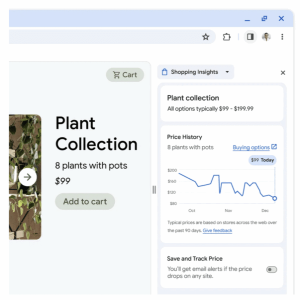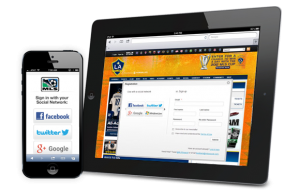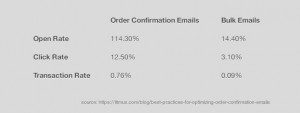While live website chats are most commonly looked at as a customer service tool rather than part of the B2B lead generation process, savvy businesses have begun to look at them as also offering a new source of conversions. Sites with live chats apps gain a 20% increase in conversions on average, and customers using live chat apps spend 60% more per purchase. In fact, chatters are 2.8x more likely to convert than other website visitors and 62% of customers say that live support would make them more willing to buy online. This week’s infographic is from WhosOn. It offers key points of strategy for before, during, and after a live chat session with a prospective customer, to help your business take advantage of these rich sales opportunities. Let’s see what they recommend.
Before the chat:
- Train your operators. Of course, you’ve already trained them to offer great customer service, but how much sales training have they been given? If you want your live chats to become an effective sales channel, your chat agents will need to be trained in up-selling and cross-selling!
- Add a live chat link to marketing emails. Putting a live chat button right in front of your customers makes it easy for them to reach out and inquire about your offer – far easier than making a phone call and with faster results than putting together an email.
- Track, then talk. If you track a user’s activity on your website before opening a chat window, you can offer a more personalized invitation that addresses their searches.
- Use prospect detection. Not sure which visitor is a real lead and which is just passing through? There’s an app for that! Smart chat software uses a feature called prospect recognition, which can help you identify the visitors that you should be reaching out to for a chat.
- Get relevant data. Having customers fill out a pre-chat survey can not only help a chat go smoothly, but the data can also be sent to your CRM and added to your lead database.
- Route the chat to the right operator. Your chat agents will likely have differing levels of expertise on the various products and services that you offer. To give potential customers the best level of service, make sure that chats are routed to the right operators with the right set of skills.
During the chat:
- Be prompt. If you delay, you can lose a potential sale. Nearly half (48%) of shoppers abandon purchases if they have to wait too long for answers to their questions. Try to respond within 60 seconds, and make sure to have answers to FAQ ready in advance to save time.
- Offer real-time translation. This will help you serve customers around the globe.
- Connect with your CRM. By pulling user information into a session, you can provide a more personalized level of service.
- Offer video chat. This will allow for product demonstrations and visual assistance.
- Be human. Little touches like introductions and real avatars can help create a better connection with customers.
- Be slick. Come across as professional by taking advantage of spelling and grammar tools – your customer service reflects your company.
- Preview the chat. Many chat programs all you to preview a user’s responses before they hit ‘send’ in order to have answers ready for them.
- Analyze chats for sentiment. Sentiment analysis can detect negative or positive feelings in real-time. This can help you figure out which leads are most worth pursuing.
- Co-browse. Screen-sharing helps you offer better and more in-depth assistance.
- Enable file transfers. This way, you can send users contracts, brochures, and other documents right away, making it easier to close the deal.
- Keep on top of workload. Make sure agents aren’t doing too many chats at once, or too few. Find that sweet spot where they have access to enough sales opportunities, but aren’t too bogged down to provide high-quality support.
After the chat:
- Offer chat transcripts. Chances are, your shoppers don’t take detailed notes during their chat session. Make it easier for them to refresh their memories about your products by providing transcripts of their chat sessions.
- Click to call. Once the chat session has ended, make it easy for customers to reach out and call to make a purchase by giving them a Click to Call button.
- Use chat feedback. Have your users fill out post-chat surveys in order to find out how satisfied they are with the service and what they would like you to change in the future.
- Sync chats to your knowledge base. A lot of your chats will contain examples of outstanding customer service or particularly effective pitches – hold onto them and add them to a database so that you can reuse them in the future.
- Analyze, analyze, analyze. As always, it’s important to monitor key metrics in order to figure out what works best, and what needs work.

(109)
Report Post






